Current-Raft Bikeraft/ Bikeraft RS (removable spraydeck)

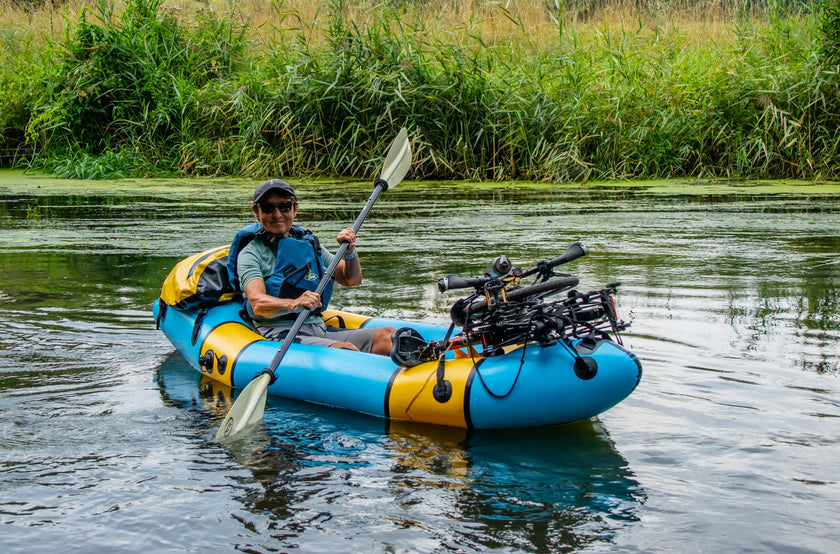
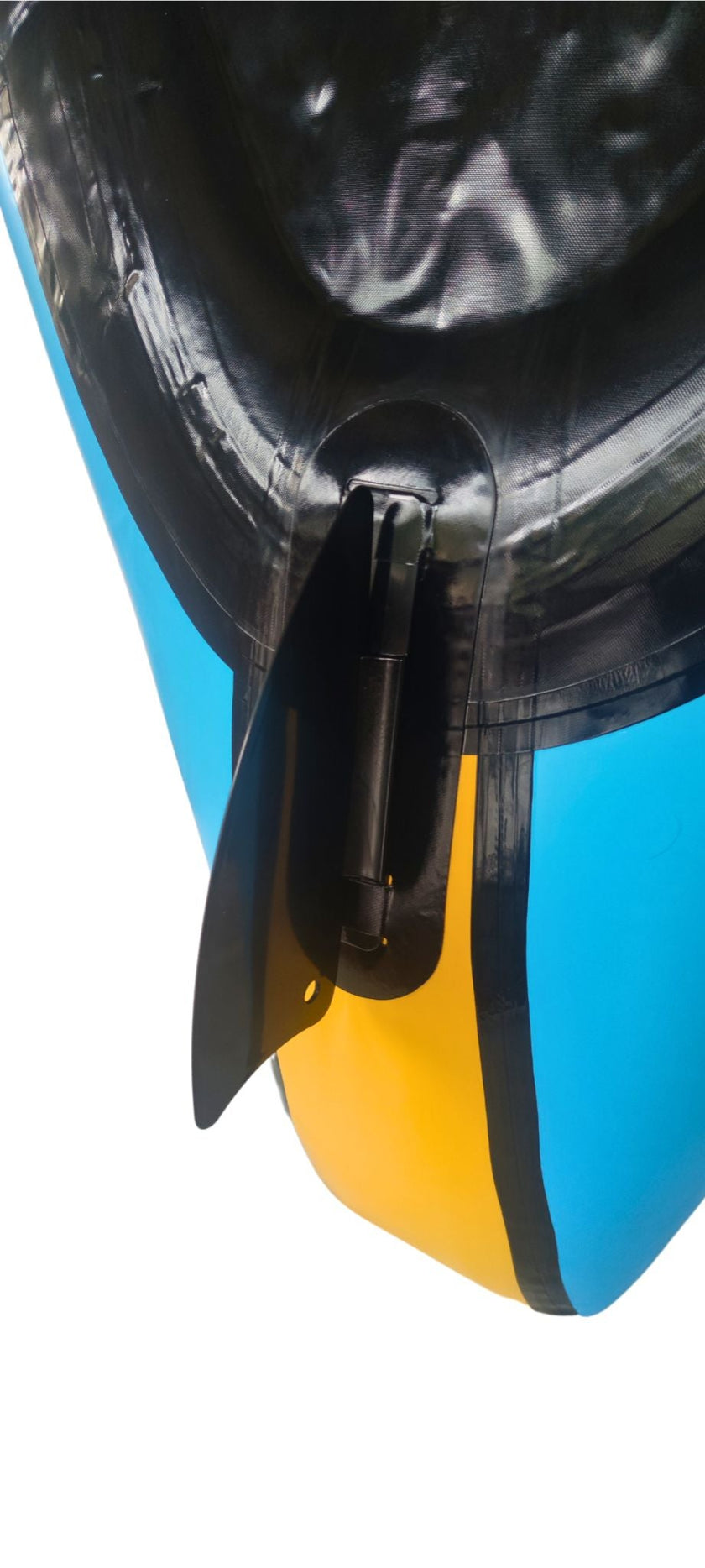
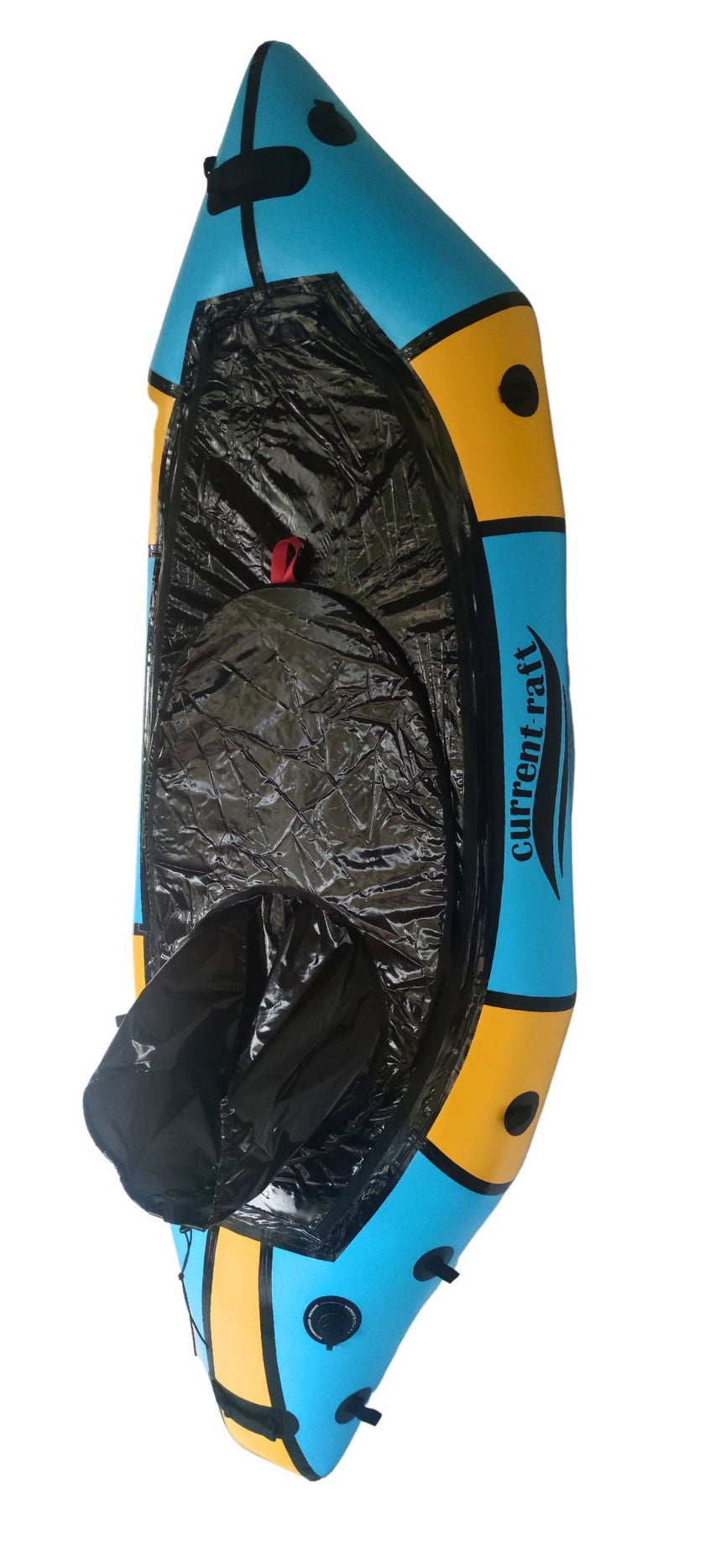
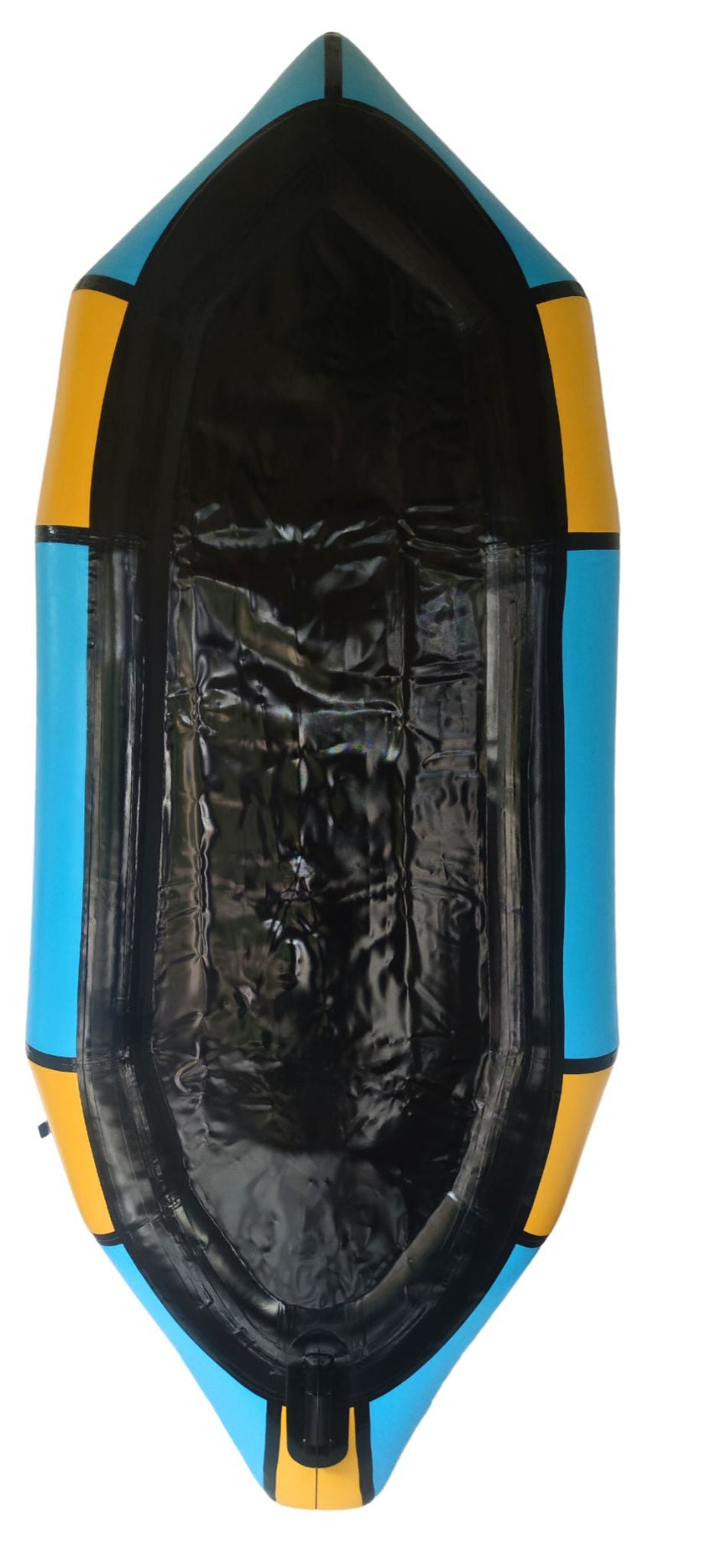
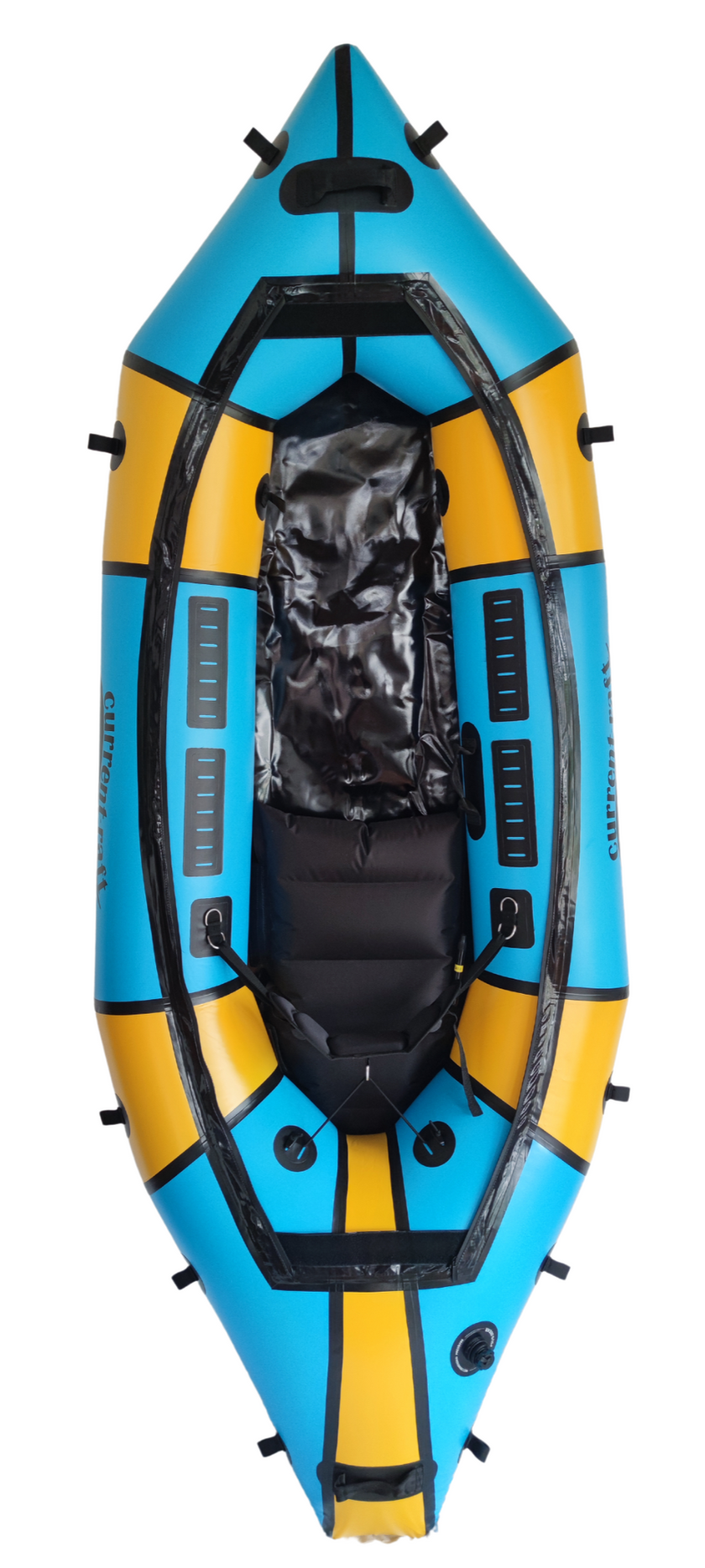
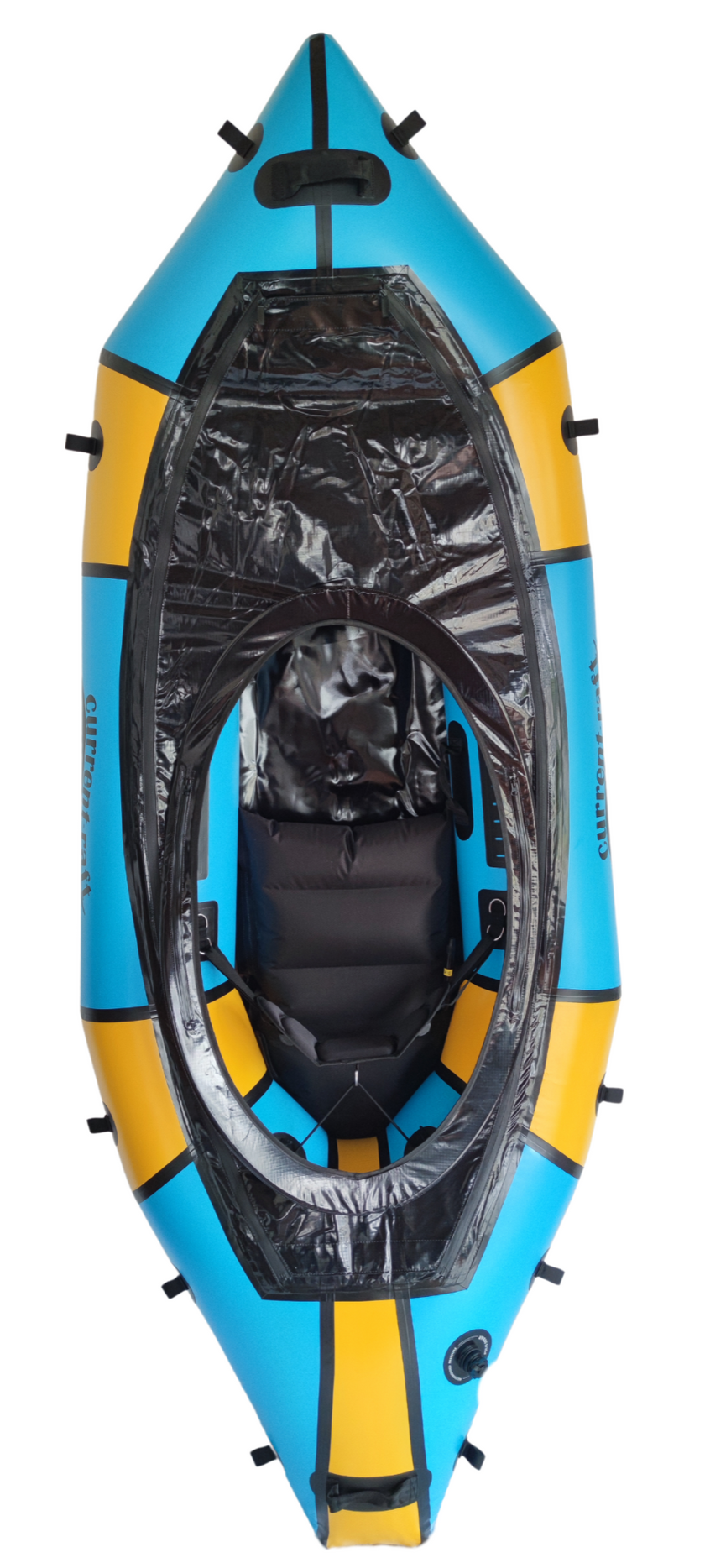
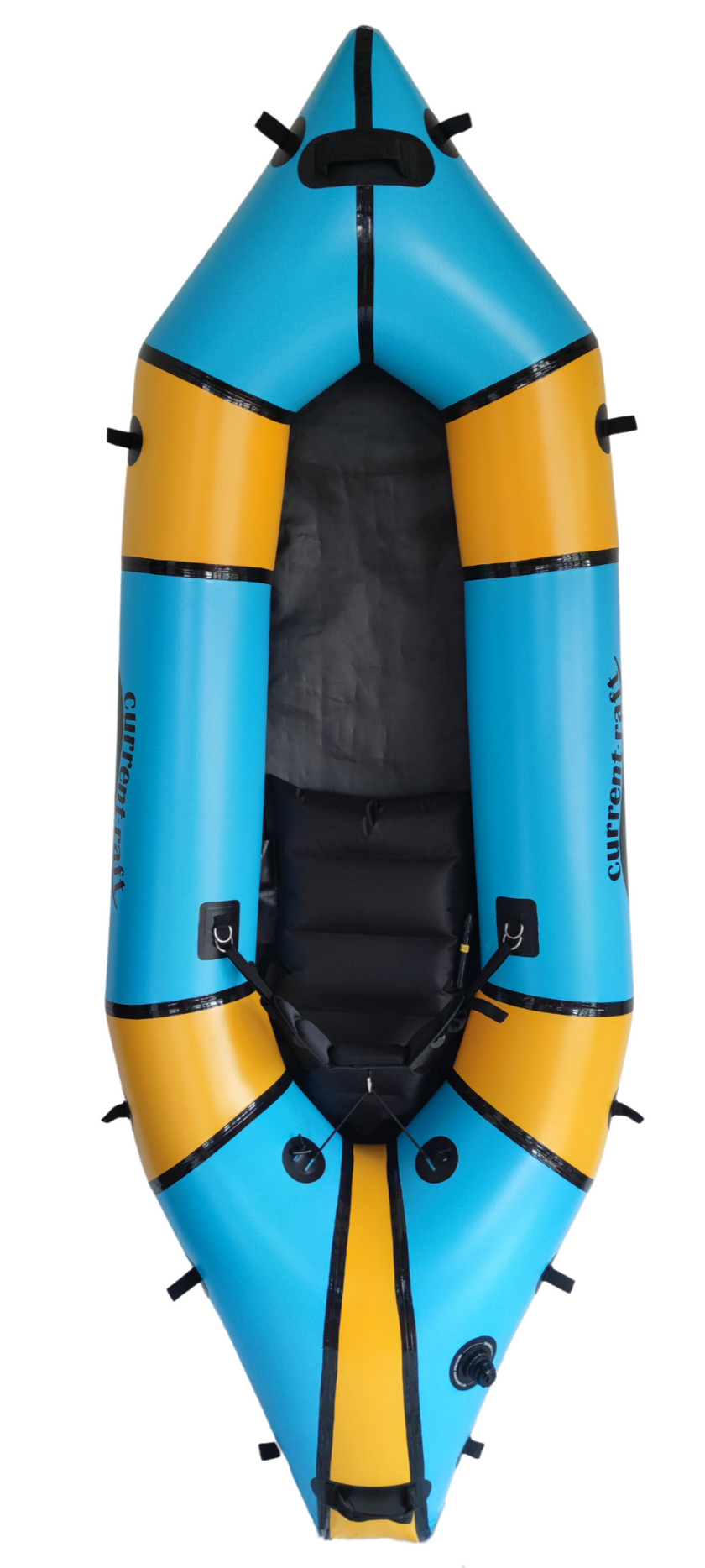
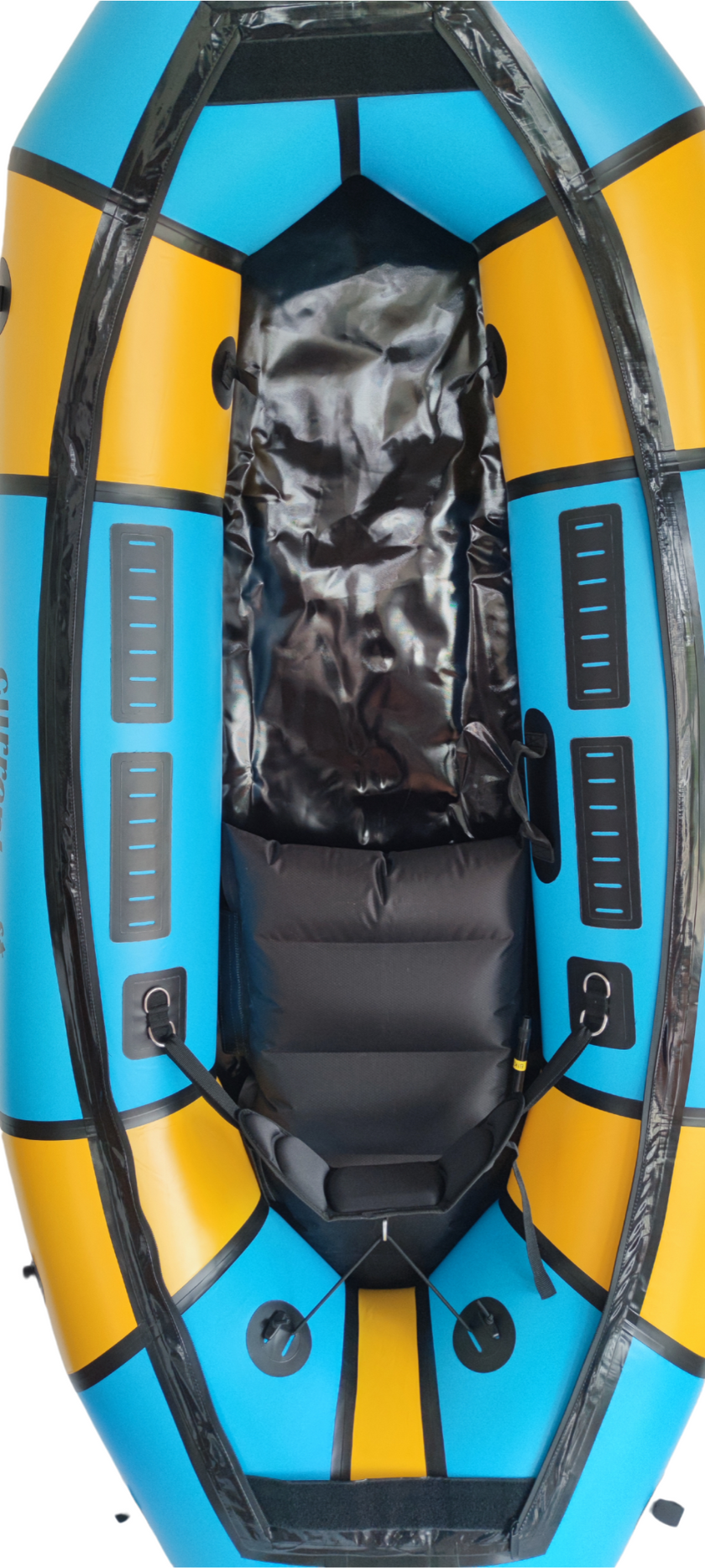
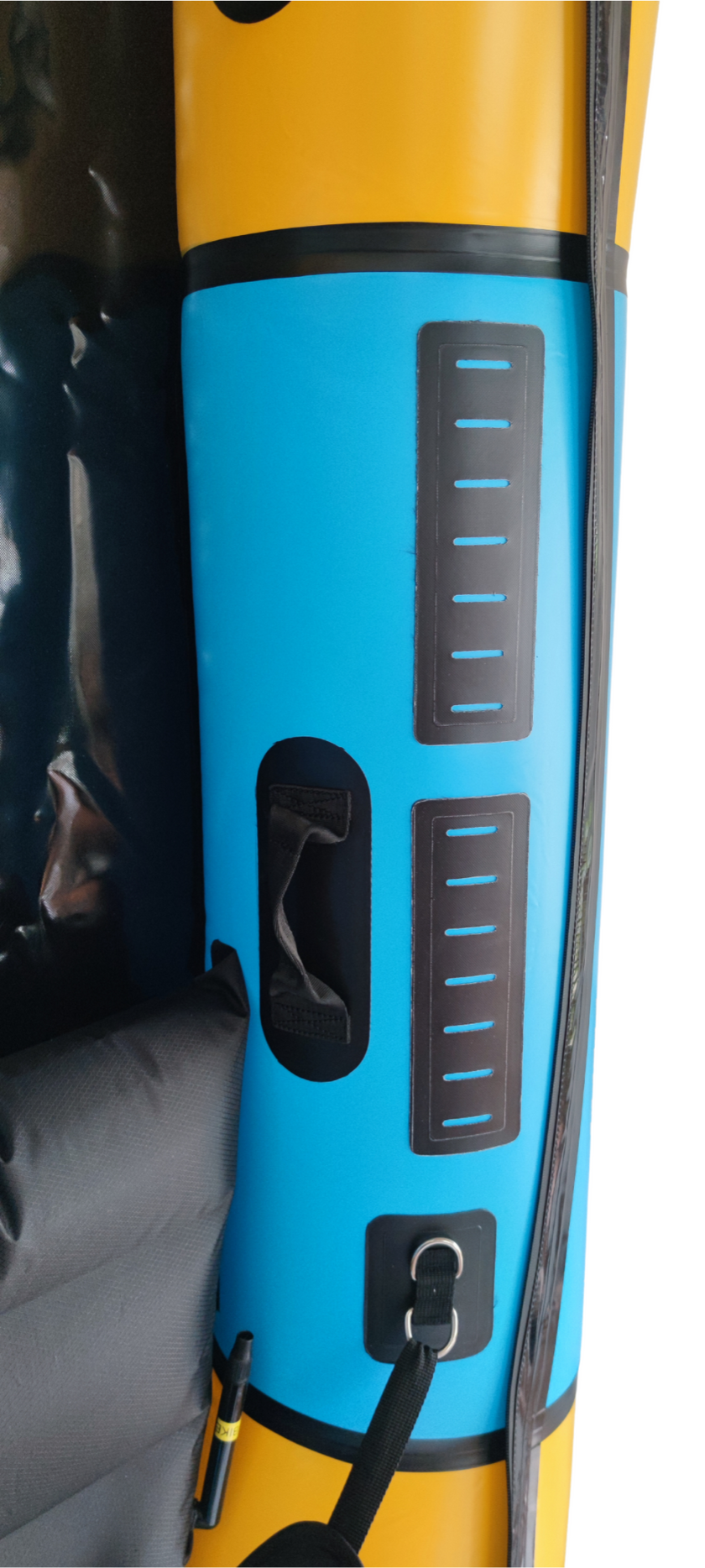
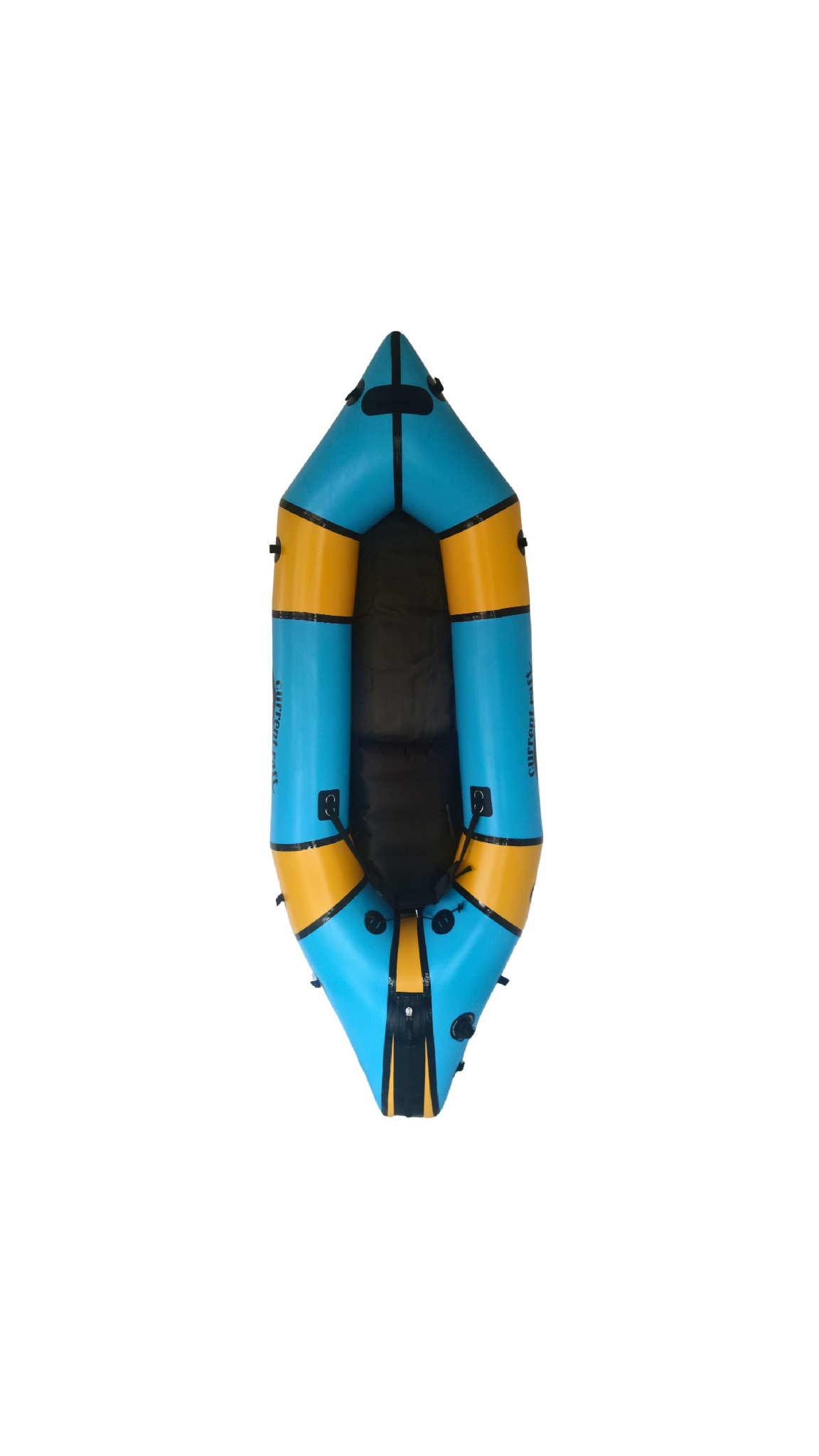
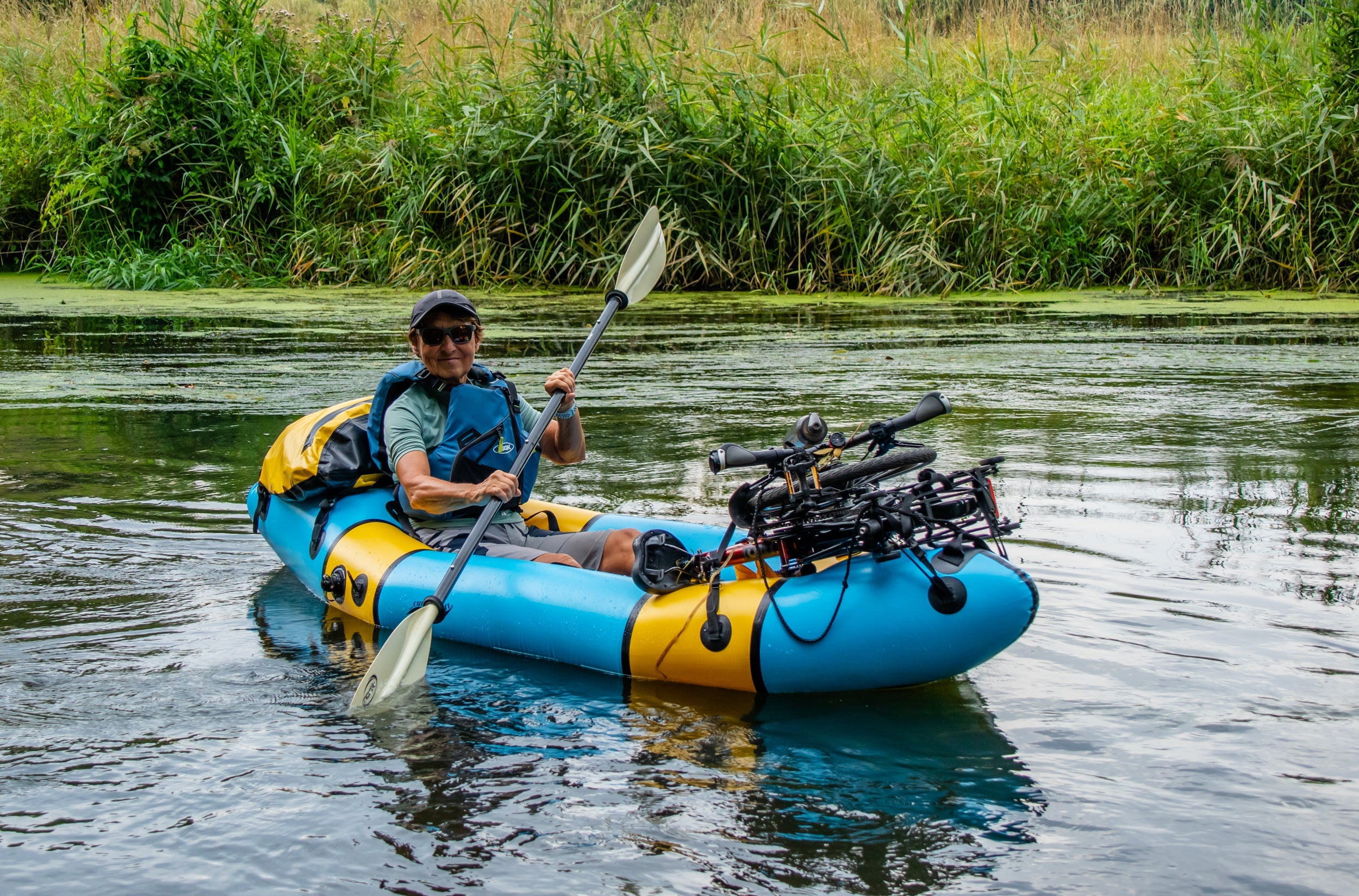
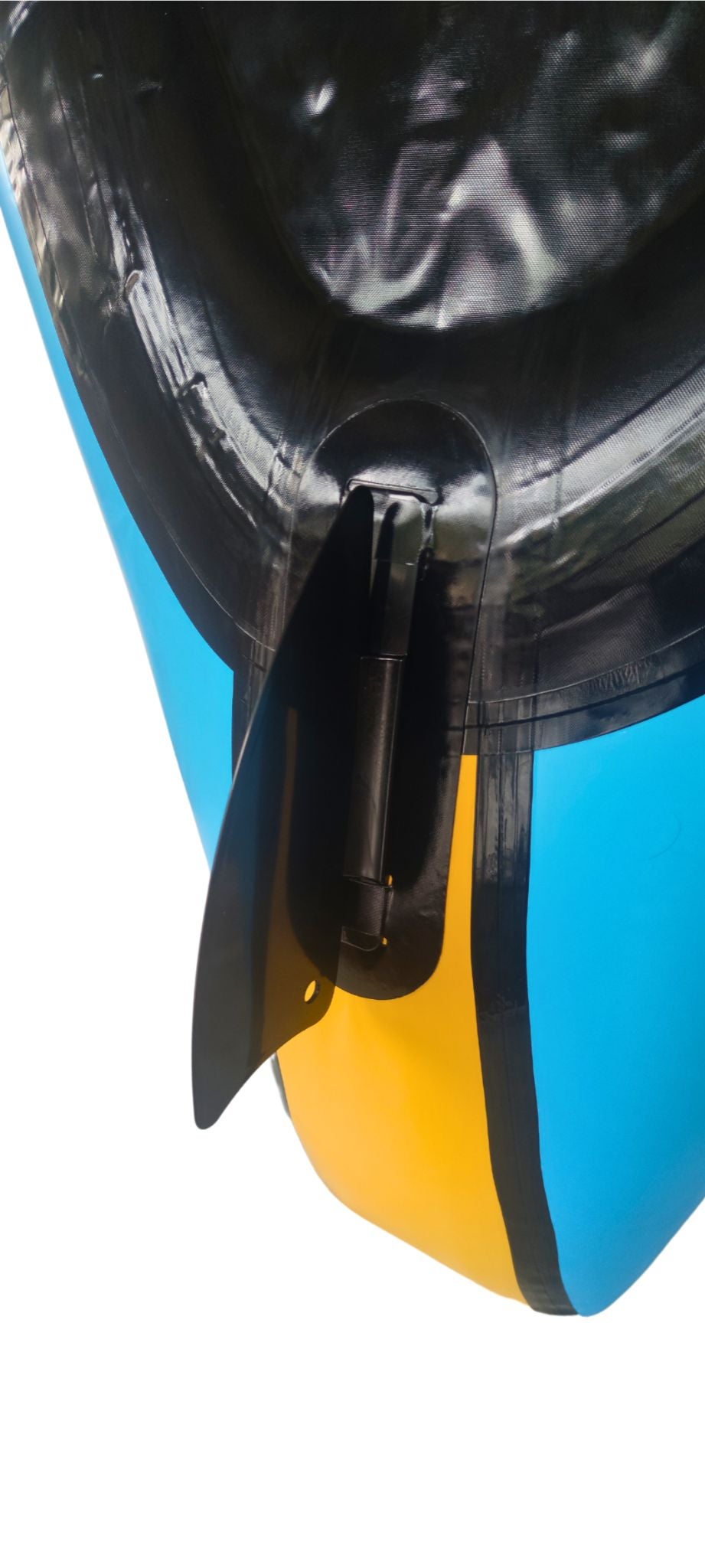
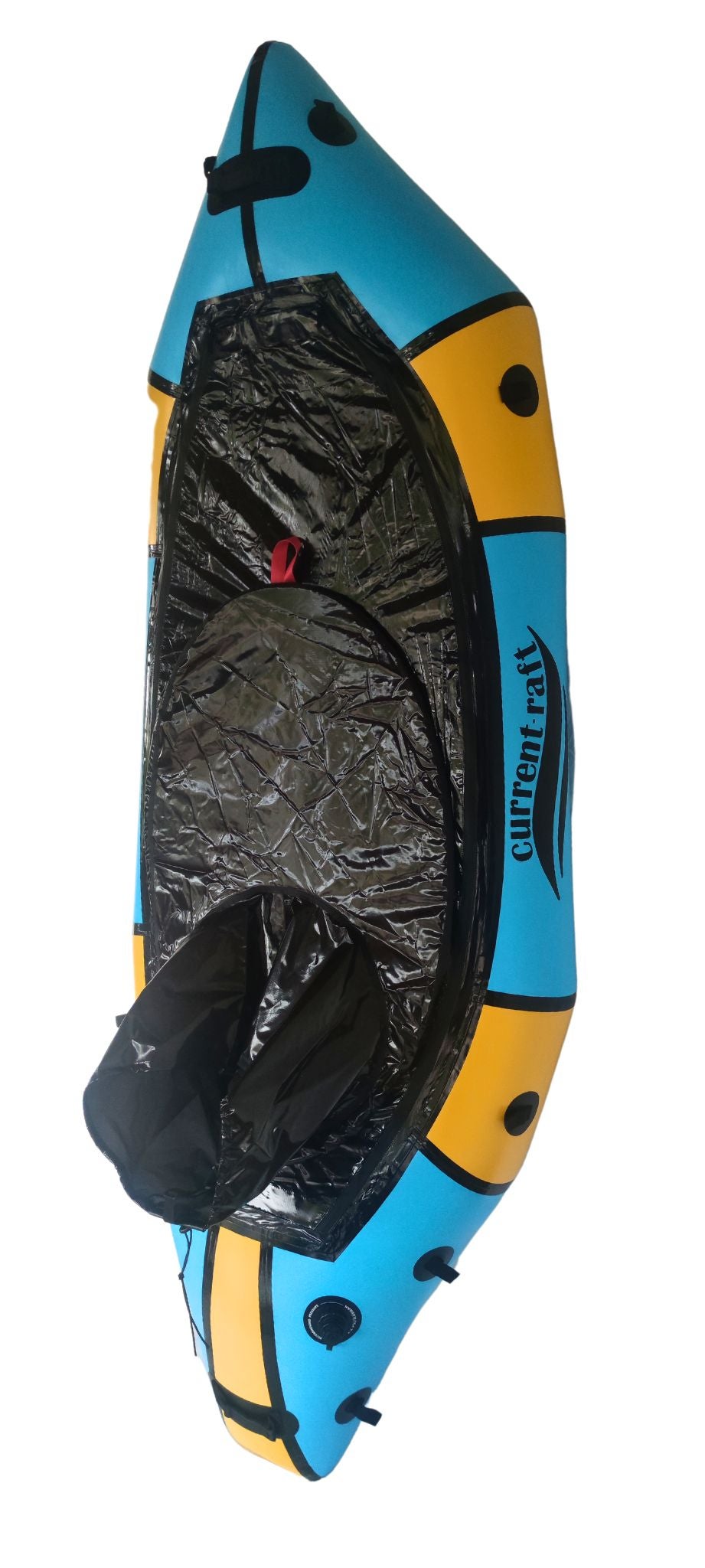
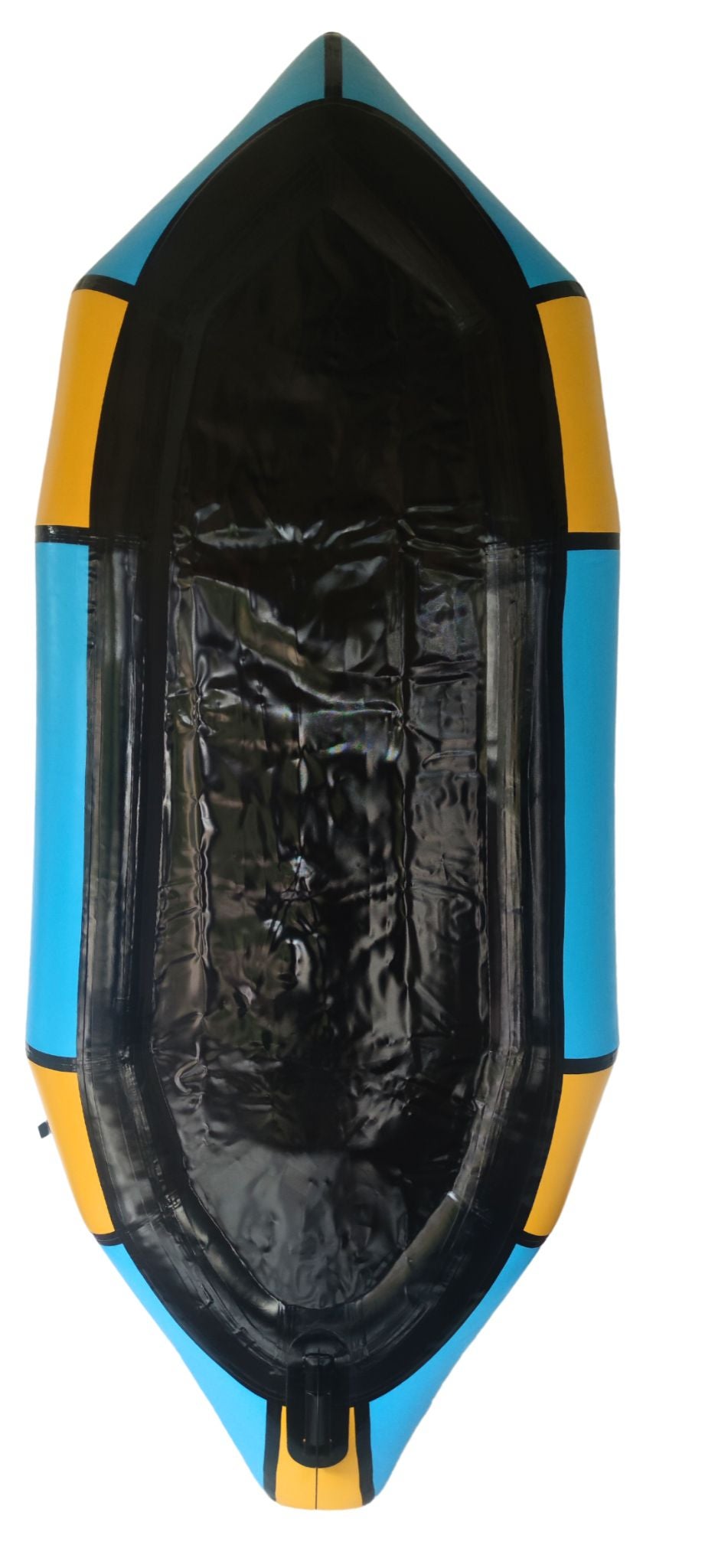
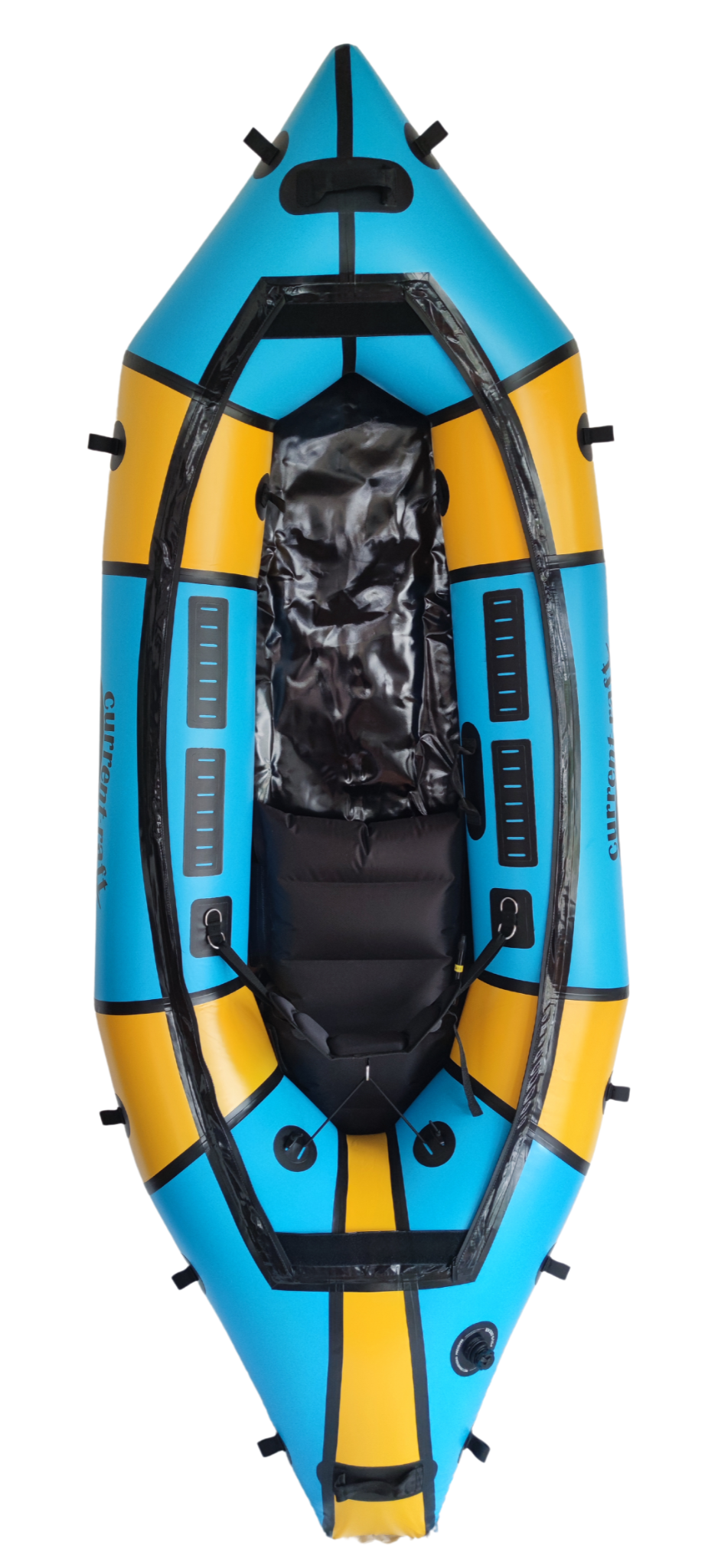
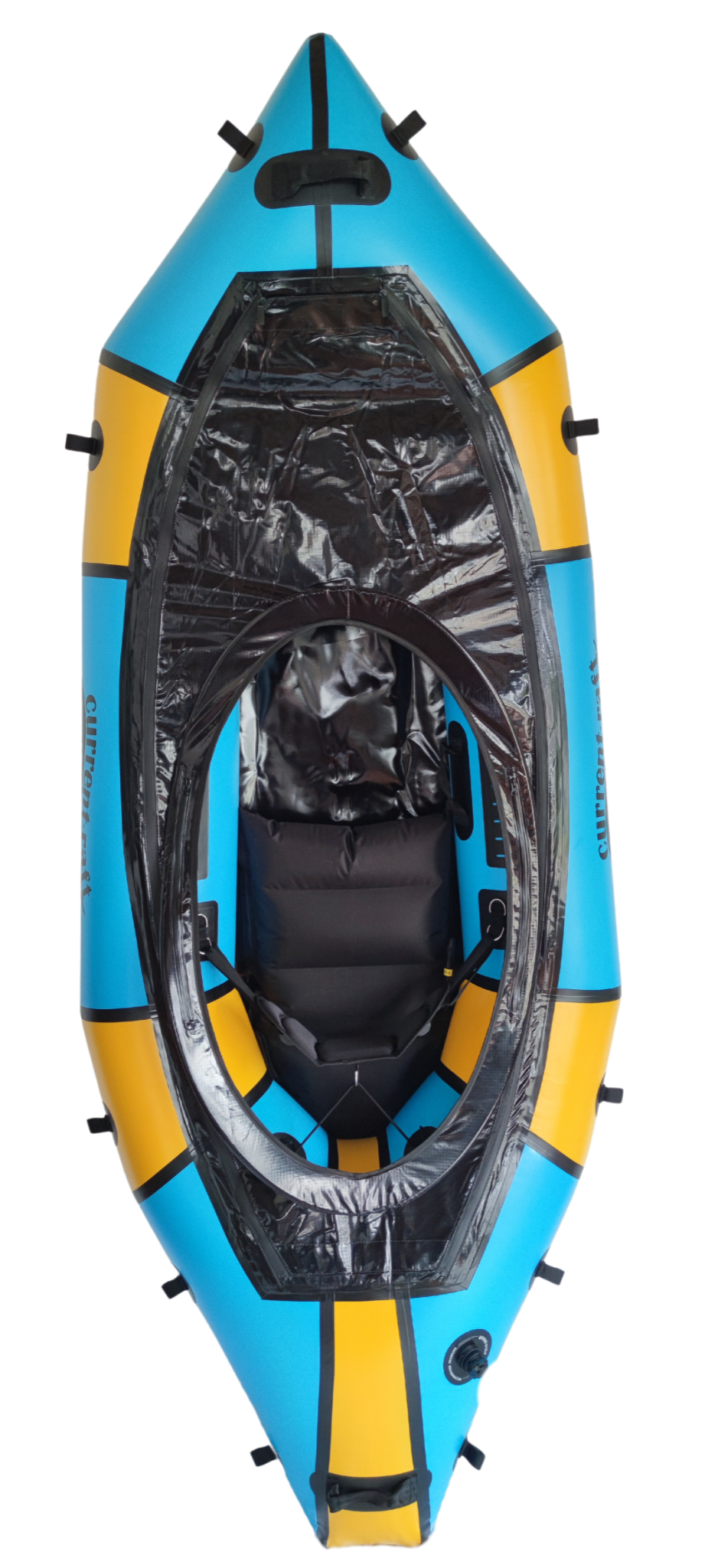
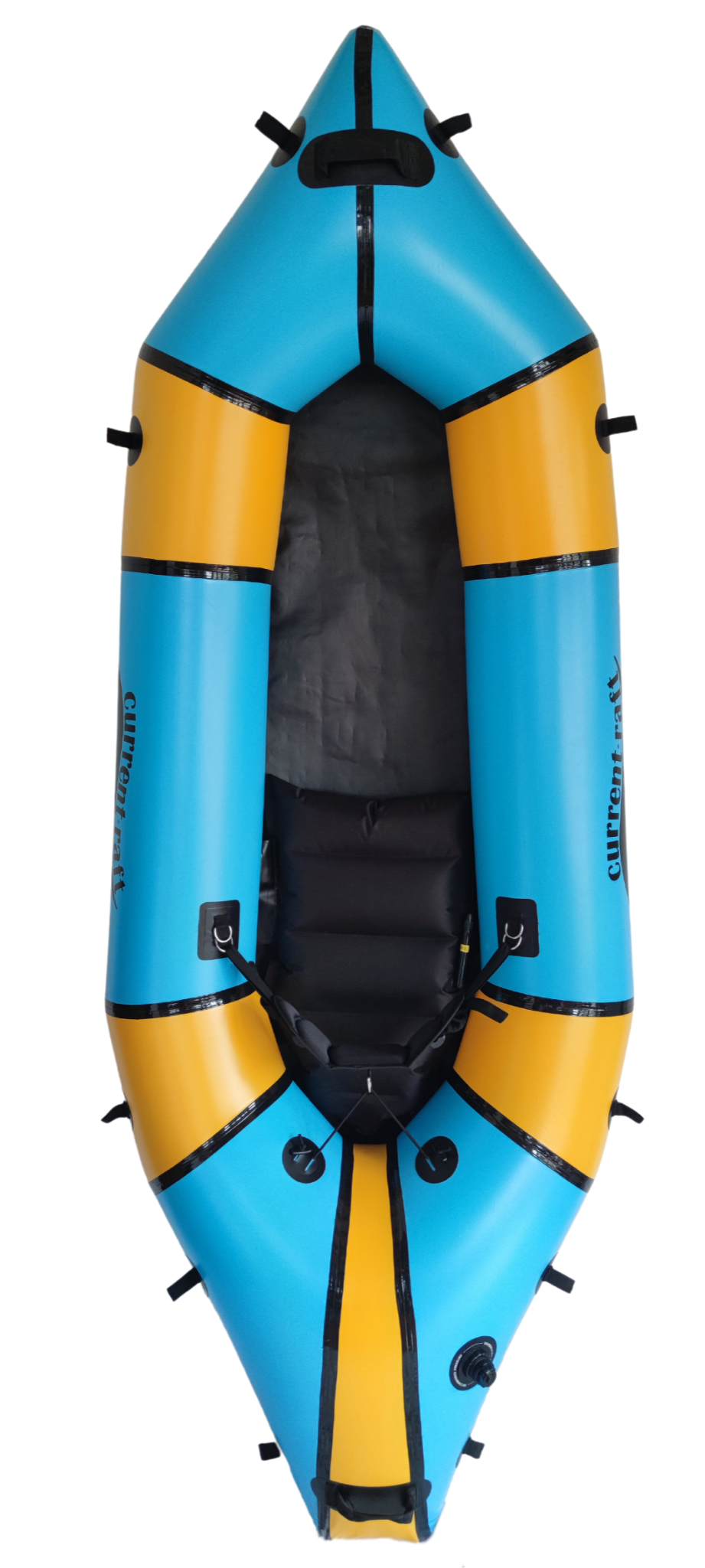
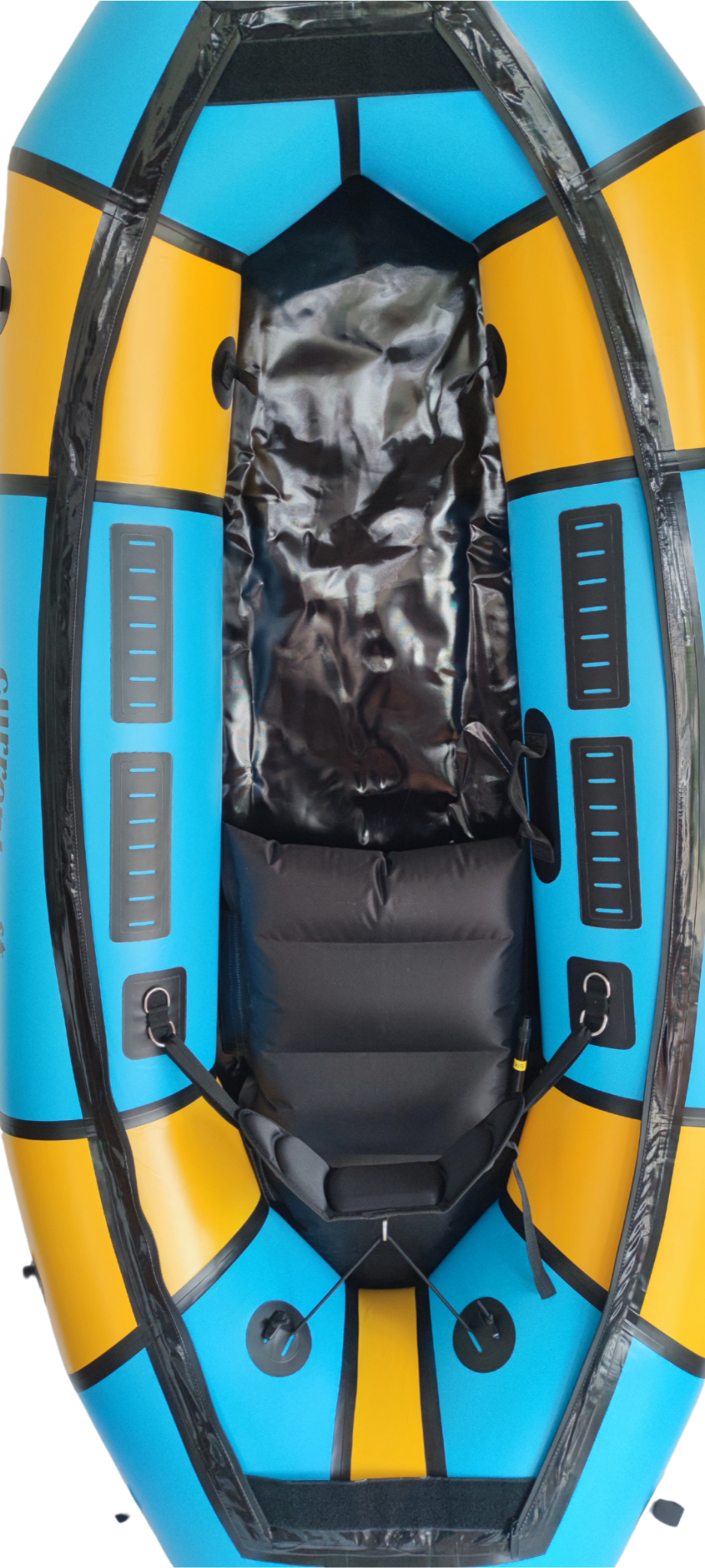
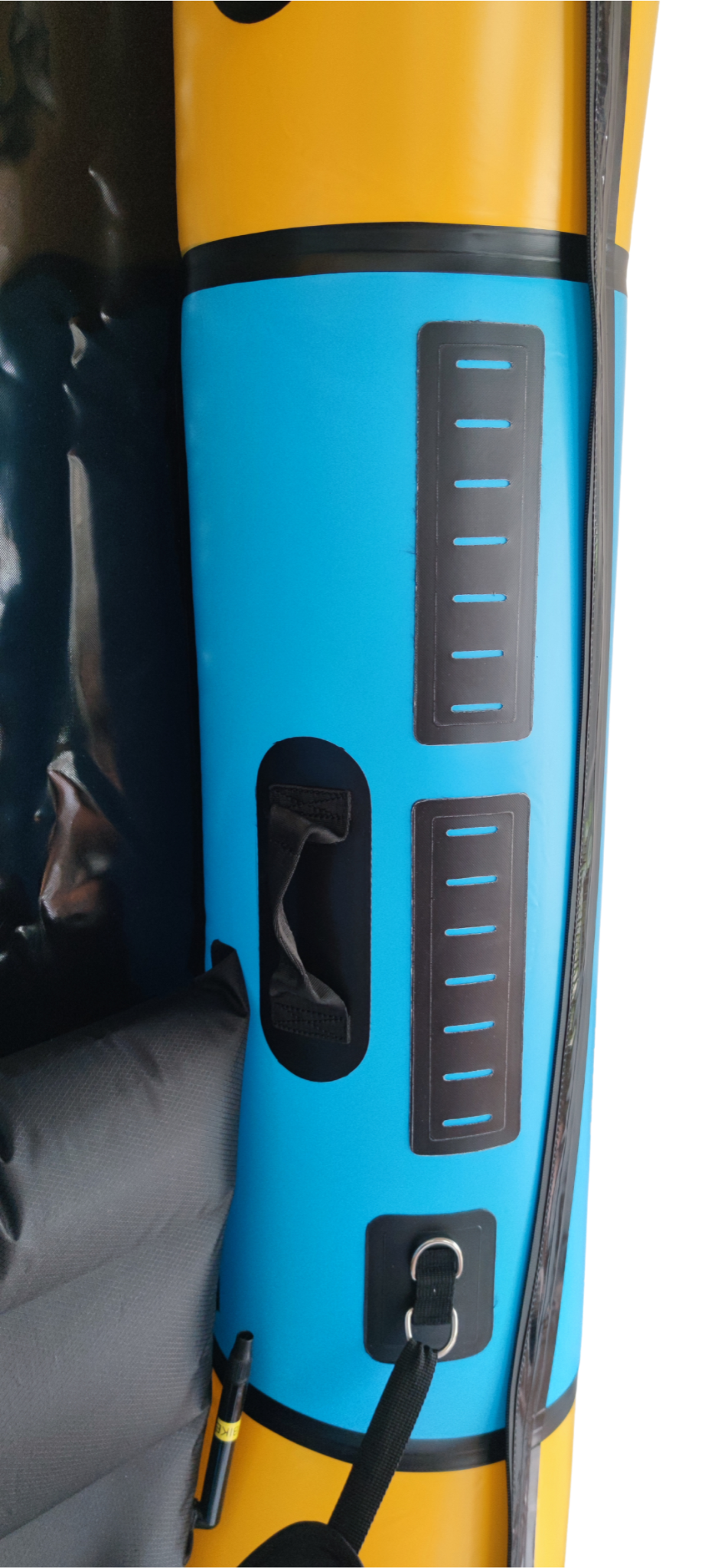
Description
Do you want to be even more independent and don't want to have to choose between a bike and a packraft? The Current-Raft Bikeraft makes taking your bike with you easy and enables great, combined tours where you can get by completely self-sufficiently without any other means of transport.
The Bikeraft, with its spacious 41cm internal width, is the most comfortable packraft on the market and still runs, thanks to its sleek and well thought-out shape, quickly across the water.
- Customer report on the bikeraft
- Test report from thebikeraftguide
Product information
The Current-Raft Bikeraft was designed in collaboration with bikeraft experts and is tailored precisely to the needs of bikerafting. Many other packrafts with a focus on high payloads rely on wide tubes, which unfortunately comes at the expense of speed and handling. Our Current-Raft Bikeraft, on the other hand, does without wide tubes thanks to its well-thought-out shape, and therefore remains fast, stable and comfortable to paddle. Thanks to the adapted bow and stern shape, long waterline, high interior width and an optimized seating position, it offers a lot of load capacity, comfort and stability, ideal for longer bike tours. This makes it fun to cover longer distances and then cycle back. The length is chosen so that even larger bicycles do not interfere with the paddling movement and the extra large internal width of 41cm offers not only comfort, but also more space for a safe exit in the event of a capsize with the bicycle on the bow. In addition, many larger paddlers appreciate the additional centimeters in the interior of the bike raft for a good fit in length and width.
Dimensions
- External length: 245cm
- Inside length: 145cm
- External width: 93cm
- Inside width: 41cm
- Hose diameter: 26cm
- Load load: 180kg
- Pack size (approx.): 17l
Weight
- Packraft 210D hoses/840D base: 2500g (including all fasteners and valve)
- Backrest: 105g
- Seat: 290g
- Inflation bag: 140g
- Spray deck (optional): 450g
- TZIP (optional): 150g
- Carry bag (optional): 300g
- Fin (optional): 130g
- Bow bag 40l (optional): 450g
Materials
- Tube material: 210D TPU nylon (0.32mm) with urethane coating
- Bottom material: 840D TPU nylon (0.65mm) with urethane coating
- Seams: 840D TPU nylon
- Valve: Dual function, non-return valve made of PVC
Attachment points
- Handle at the rear (not on TZIP models)
- Handle on the bow
- 6 fastening loops at the rear
- 4 fastening loops on the bow
Scope of delivery
- Packraft
- Inflation bag
- Seat
- Inflatable backrest (foam backrest with bag for an additional charge)
- Repair kit
What length do I need?
The decisive factor for the correct packraft length should be the length of the paddler's legs. This is best measured while sitting. To do this, sit on the floor against a wall in a comfortable paddling position and measure the distance from your tailbone to your heel. Remember that clothing and paddling shoes affect your measurement by a few centimeters, or measure directly in paddling clothing. Due to the special requirements of bike rafting and an adapted seating position, we recommend adding 10cm to your personal leg length for this model. Of course, the possibility of extra storage space in the bow can also lead to a decision to go for a slightly longer size. We would be happy to advise you on this at any time!
Additional information
- We recommend using the inflation bag to inflate and applying the remaining pressure to the packraft with your mouth. This procedure ensures sufficient pressure in the tubes and is gentlethe material. If a pressure pump is used for inflation, we recommend not exceeding the pressure of 0.08 bar or 1.2 PSI.
- The packrafts can be used without restrictions in salt water or chlorinated pools. In this case, however, you should make sure to rinse off any salt or chlorine residue thoroughly before storing.
- The packrafts should always be stored dry and dust-free. The latter is especially important when using a TZIP storage system. A dry, well-ventilated room without direct sunlight is best for storage. After you get home from your paddling trip, let your packrafts dry thoroughly when inflated. Pay particular attention to moisture between the edges. The packraft can be rolled or folded very small without causing any damage. The coaming can also be double wrapped and put together without any problems.
- The zipper on the packraft (if available) or bow pocket requires regular care and should always be well lubricated to ensure smooth opening and to avoid damage caused by strong pulling. We recommend environmentally friendly greasing with our beeswax stick or a comparable product. In addition, the zipper should always be stored dust-free and without kinks.
- To avoid overinflation, the packrafts should never be placed on land in the sun for a long period of time. After removing it from the water, it is always advisable to let some air out of the packraft. The same applies to any inflatable equipment.
- After paddling, sand and small stones should be completely removed from the inside of the packrafts. In particular, the transition area between tubes and ground, as well as tubes and spray deck, should be kept free of dirt in order to avoid friction and damage in the long term.
Safety instructions
- Non-swimmers do not belong in a packraft. Anyone who takes non-swimmers out on the water carries a high risk.
- If possible, do not paddle alone. Always leave where and until when you plan to travel.
- Take water sports and safety courses with certified trainers.
- Inquire about the dangers of the water - water levels, ebb and flow, currents, weirs and weather conditions. We strongly advise against driving during floods.
- Avoid weirs, power stations and dams of all kinds. There is often a danger to life here, so it is recommended to carry them over a wide area.
- Take first aid and rescue equipment with you on the water.
- Wear clothing appropriate for the weather. Cold weather and water can cause hypothermia.
- Assess your ability correctly and plan tours according to the weakest group member.
- Keep your distance from other water users, especially all motor ships and sailing vessels. Packrafts almost always have to give way and are difficult to see by the skipper.
- Observe the inland waterway and sea shipping regulations. They apply to all shipping lanes and canals and contain binding rules for all watercraft.
- Put on a life jacket or, on large bodies of water, a fainting-proof life jacket and head protection. When whitewater rafting, wear a cold-weather suit and a helmet.
- Particular dangers exist on white water and on the coast. These waters can only be navigated with special equipment and by experienced paddlers, ideally with expert guidance and local guidance.
- The emergency exit from the packraft should be practiced. We recommend practicing quick exits on land, in the pool or under supervision.
- In the event of additional modifications to the packraft, getting in and out must not be impaired.
- Getting back on the water should be mastered safely before navigating open water or white water.